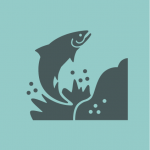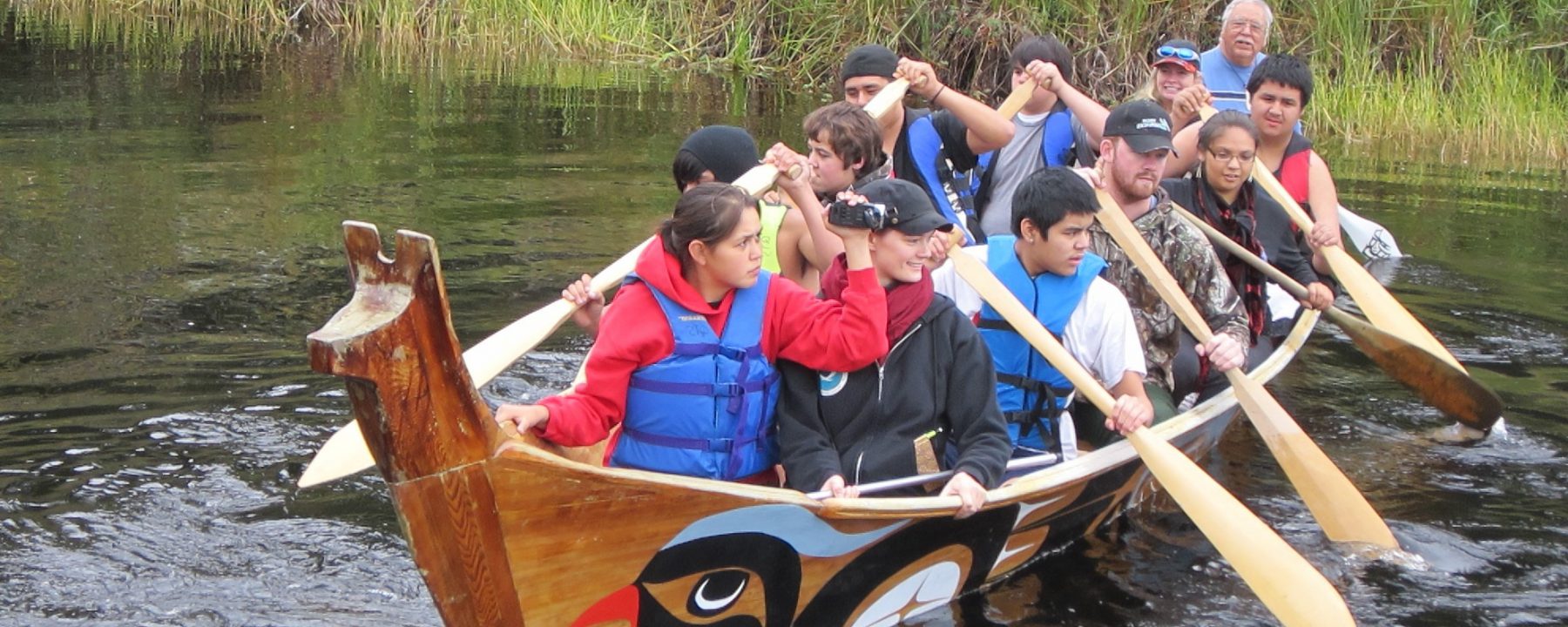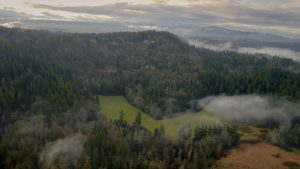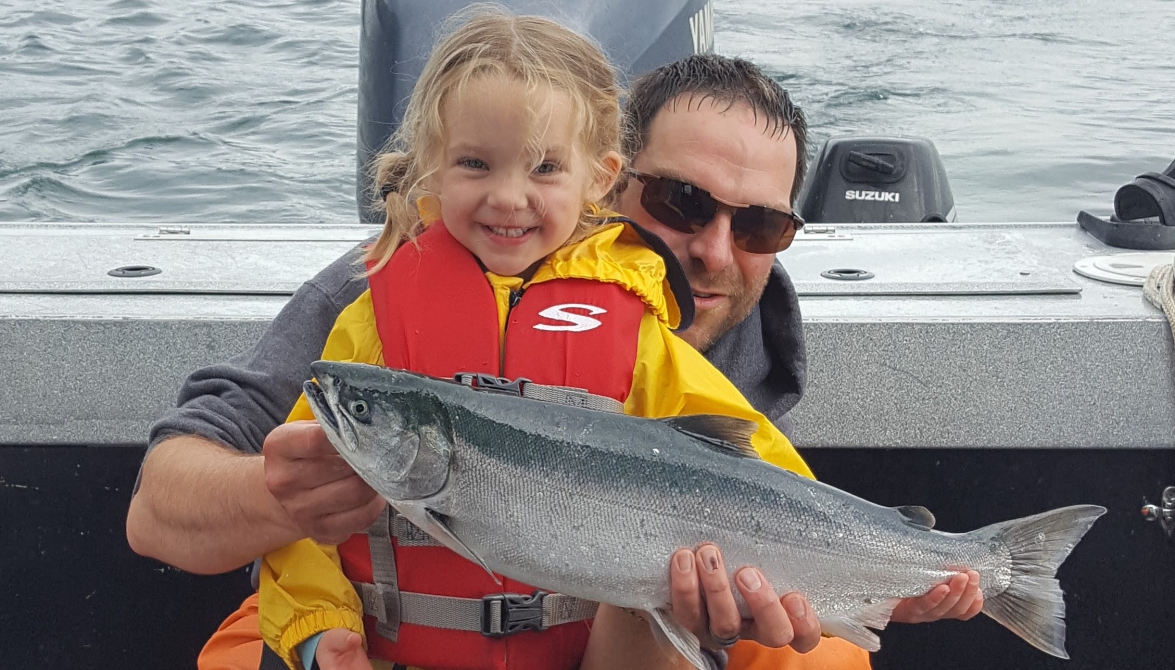Why Recover Salmon?
 Washingtonians rely on healthy, harvestable populations of salmon to support a robust economy, feed iconic orcas, maintain recreational opportunities, and fulfill obligations to Native American tribes. The federal Endangered Species Act also requires protection of species at risk of extinction, such as many of Washington’s salmon, steelhead trout, and bull trout populations.
Washingtonians rely on healthy, harvestable populations of salmon to support a robust economy, feed iconic orcas, maintain recreational opportunities, and fulfill obligations to Native American tribes. The federal Endangered Species Act also requires protection of species at risk of extinction, such as many of Washington’s salmon, steelhead trout, and bull trout populations.
Salmon are central to Washington tribes’ cultures, identities, and businesses. Through treaties with the federal government, many tribes exchanged land for guaranteed, perpetual access to hunting and fishing areas. Other tribes in Washington never ceded their claims to ancestral lands and still rely on salmon. Washington State is obligated to uphold fishing rights for tribes and has a duty to ensure salmon are abundant enough for harvest. Tribes and the State co-manage salmon resources, and tribes have led salmon recovery efforts throughout the state.
What Does Recovery Mean?
Congress passed the Endangered Species Act in 1973, declaring that United States’ imperiled fish, plants, and other wildlife possessed “esthetic, ecological, educational, recreational, and scientific value to the Nation and its people.” Upon signing the bill into law, President Richard Nixon stated the following:
“[n]othing is more priceless and more worthy of preservation than the rich array of animal life with which our country has been blessed.”
Recovery is the process of reducing the risk of extinction for a species across its geographic range until it no longer requires protections under the Act.
What's at Stake
Economy
Salmon contribute directly and indirectly to the robust statewide economy. Domestic commercial fisheries create nearly 23,000 jobs in Washington, with salmon harvest alone worth almost $14 million a year.1 Recreational fishing generates more than $1.5 billion in economic activity annually in Washington State,2 and salmon are the prized quarry of many Washington anglers.
Recovering salmon also means protecting the scenic landscapes, accessible open spaces, and abundant, charismatic wildlife, including salmon and orca, that attract residents and tourists to the state.
Environment
As keystone species, salmon support diverse food chains, bringing nutrients from the ocean to rivers and streams.
Scientists estimate 138 species of wildlife, from whales to insects, depend on salmon for their food.3
Even trees and shrubs use salmon as fertilizer. Salmon fertilize shrubs and trees with nutrients they bring back from the ocean, supporting the stream-side forests on which their species rely. When salmon populations are healthy, Washington’s ocean, rivers, and streamside forests likely are healthy too.
Recreation Opportunities
![]()
Recreational anglers catch Washington salmon from the ocean of southeast Alaska to tiny mountain streams in the Blue Mountains. Every year, the State issues about 500,000 fishing licenses with catch record cards (required when fishing for salmon, steelhead, sturgeon, and halibut), providing opportunities to fish for salmon in the ocean, Puget Sound, and rivers. The opportunity is significant: in the past decade, recreational anglers harvested between 305,000 and 1.1 million salmon from Washington waters each year.4
For those who would rather watch salmon than catch them, salmon viewing opportunities abound. Every year, visitors and locals gather at public viewing sites to see salmon returning to streams and rivers around the state.
Food
Salmon provide excellent nutrition to Washingtonians. While many salmon populations are in crisis or are continuing to struggle, some are abundant enough to harvest. These salmon feed families across political, economic, and social spectrums and are important particularly to Native Americans. Salmon are rich in omega-3 fatty acids, high in protein, and an excellent source of micronutrients such as B-vitamins and selenium.

Culture
Pacific Northwest people have identified themselves with salmon since time immemorial. The state’s first inhabitants–Native American tribes–define themselves as Salmon People.5 Salmon are woven throughout tribal lives as a source of food, income, art, literature, heritage, and celebration. Washington tribes remain committed to protecting and recovering salmon and have worked tirelessly to restore their habitat. To this day, government agencies that co-manage salmon populations rely on the traditional ecological knowledge and scientific expertise that tribes provide.
Salmon are an icon of the Pacific Northwest. Catching a first salmon is a rite of passage for many Washingtonians, and salmon fishing has long supported many family traditions and businesses.
Tribes are committed to healthy, harvestable populations that sustain a broad range of cultural, ecological, and economic benefits.
Indian Tribes and Salmon Recovery
![]() Indian tribes who witnessed the 150-year decline in Washington salmon populations now are leaders in salmon recovery.
Indian tribes who witnessed the 150-year decline in Washington salmon populations now are leaders in salmon recovery.
Tribal governments are responsible for hundreds of successful salmon habitat restoration and protection projects on and off tribal lands. They employ a range of scientists, technicians, and policy staff that advocate for salmon recovery, lead planning and implementation efforts, and monitor progress toward recovery.
In partnership with the Washington Department of Fish and Wildlife, treaty tribes co-manage the state’s salmon, including collaborating with the federal government to set harvest seasons. Tribal hatcheries produce about 40 million juvenile salmon annually to support commercial, recreational, and tribal harvest, and to sustain important populations.
Tribal knowledge, expertise, experience, and understanding is critical for salmon recovery. Along with co-managing salmon, individual tribes and tribal organizations produce reports, such as The State of Our Watersheds by the Northwest Indian Fisheries Commission, that provide an ongoing scientific foundation for recovery. The tribal perspective and vision of keeping salmon strong and harvestable for future generations is a model that has maintained salmon in the rivers and can help propel successful recovery across the state.
Videos
Salmon’s Agreement
This short film from indigenous perspectives shows how salmon keep their agreement to us and the environment, giving up their lives to spawn again and again. Watch the Video
South Prairie Restoration Project

This video showcases the restoration of South Prairie Creek in Pierce County and discusses the value of salmon restoration for the salmon themselves and for people. Watch the video.
Banner photograph was taken by Kevin Long with the North Olympic Salmon Coalition of a coho salmon jumping at Hoko Falls, near Seiku on the Olympic Peninsula. A project funded by the Brian Abbott Fish Barrier Removal Board was completed recently nearby. The gallery photograph of juvenile coho was taken by John R. McMillan, NOAA/NWFSC, and the fishing boat by Anna Kagley. The photograph of the people in the canoe was taken of the Quileute Tribal School in Lake Ozette on the Olympic Peninsula and is courtesy of NOAA.





